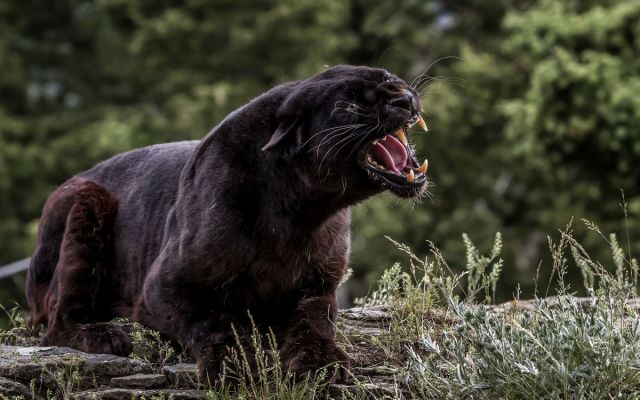

| Online: | |
| Visits: | |
| Stories: |

| Story Views | |
| Now: | |
| Last Hour: | |
| Last 24 Hours: | |
| Total: | |
The 10 Most Terrifying Native American Legends

In nearly all cultures, myths and legends can serve as cautionary tales, keeping one foot in practical reality and the other in the realm of the supernatural… and it’s no surprise that the most effective cautionary tales are also the scariest.
The ancient lore of the indigenous peoples of North America are as varied and far-reaching as the continent itself, and unless you’re well-versed in native lore, you might not realize how many of those tales are populated by horrifying spirits, ghosts, witches, demons and monsters… and since we’re in the scare business, we’re going to share the most nightmarish ones with you.
Many of the frightening creatures listed below span multiple tribes — and in some cases, hundreds of generations. So if you investigate their origins further, you’ll see they have many different names and traits, depending on where their tales are told.
Camazotz: The Death Bat
This ferocious creature originates with the ancient Mayans, who depicted him as a powerful god-monster from the hellish domain of Xibalba, where he presides over swarms of bloodthirsty vampire bats. Though powerful enough to destroy entire civilizations, Camazotz made a treaty with human beings to bring them fire… but in exchange, he demanded human sacrifices.
In other words, there are evil forces lurking everywhere… so you’d better do your homework!
Chenoo: The Ice Giant
Though some tales describe the Chenoo as a Bigfoot-like creature, the original legend from the Wabanaki people tells that he was once a human, but at some point committed a horrible crime, for which the gods cursed him and turned his heart to ice. His frozen spirit was then trapped within the body of a lumbering, troll-like monster, who devours any human he can get his hands on.
Kanontsistonties: The Flying Heads
Iroquois myths include some nightmarish tales, but the Flying Heads are the creepiest by a long shot. There are many stories about these evil creatures, most of which portray them as a kind of vampire, and they vary in size from tiny to humongous. The most familiar story involves one of the beasts attacking a woman who was roasting chestnuts; the creature accidentally ingested a hot coal from the fire, which burned it to ashes.

Mishipeshu: The Water-Panther
The story of the Water-Panther spans multiple tribes, including Cree, Algonquin, Ojibwe, and Shawnee. It’s usually described as a giant dragon-like feline, and the most common element is the monster’s aquatic habitat; it lurks in lakes and rivers, waiting for humans to come close to the water, then pulls them under and drowns them.

Image Credit: iStock/frentusha
Yee Naaldlooshii: The Skinwalker
Known mainly to Navajo folklore, the Skinwalker is essentially the North American equivalent of the werewolf. In most tales, the creature is a magical or cursed human being — usually a shaman who takes part in a heretical ceremony designed to summon evil forces, so that he may take on the characteristics of an animal. That animal can take many forms, including wolves, bears and birds.
Skudakumooch: The Ghost-Witch
One of the scariest figures in Passamaquoddy and Micmac mythology, the Ghost-Witch is often said to be born from the dead body of a shaman who practiced black magic; the demonic entity then emerges each night with murder on its mind. They can be killed with fire, but beware if approaching one: simply making eye contact or hearing the witch’s voice can bring a diabolical curse down on the unwary.

Tah-tah-kle’-ah: The Owl-Women
From the Yakama tribe come tales of five supernatural women who resemble giant owls, dwelling in caves by day and flying out at night to prey on all manner of creatures — including humans. In fact, they are said to prefer the taste of children. Legend has it they can hunt humans by mimicking their language.

Teihiihan: The Little Cannibals
Among the most dreaded figures in Cheyenne and Arapaho legends (and more), these savage humanoids may be child-sized, but they’re incredibly strong, and often attack in large numbers. According to some myths, the Teihiihan were fearsome warriors in a previous life, resurrected as dwarves after dying in battle.

Uktena: The Horned Serpent
Cherokee legends prominently feature this dragon-like behemoth, which is believed to have originated as a human, taking the serpentine shape to seek vengeance on those who wronged them. Much like the dragons of European myth, there are stories of men proving their bravery by confronting one of the powerful beasts, who are also lightning-fast and can devour a person in one bite.

Wendigo: The Evil That Devours
Arguably the most powerful and deadly creature in North American folklore, the Wendigo appears in many tribal legends, but the best-known description comes from communities surrounding the Great Lakes region. Many of the legends are cautionary tales enforcing taboos against cannibalism, by claiming that any human who eats another’s flesh will be transformed into a creature of pure evil — a form of Manitou cursed with insatiable appetite.
Check out more contributions by Jeffery Pritchett ranging from UFO to Bigfoot to Paranormal to Prophecy






